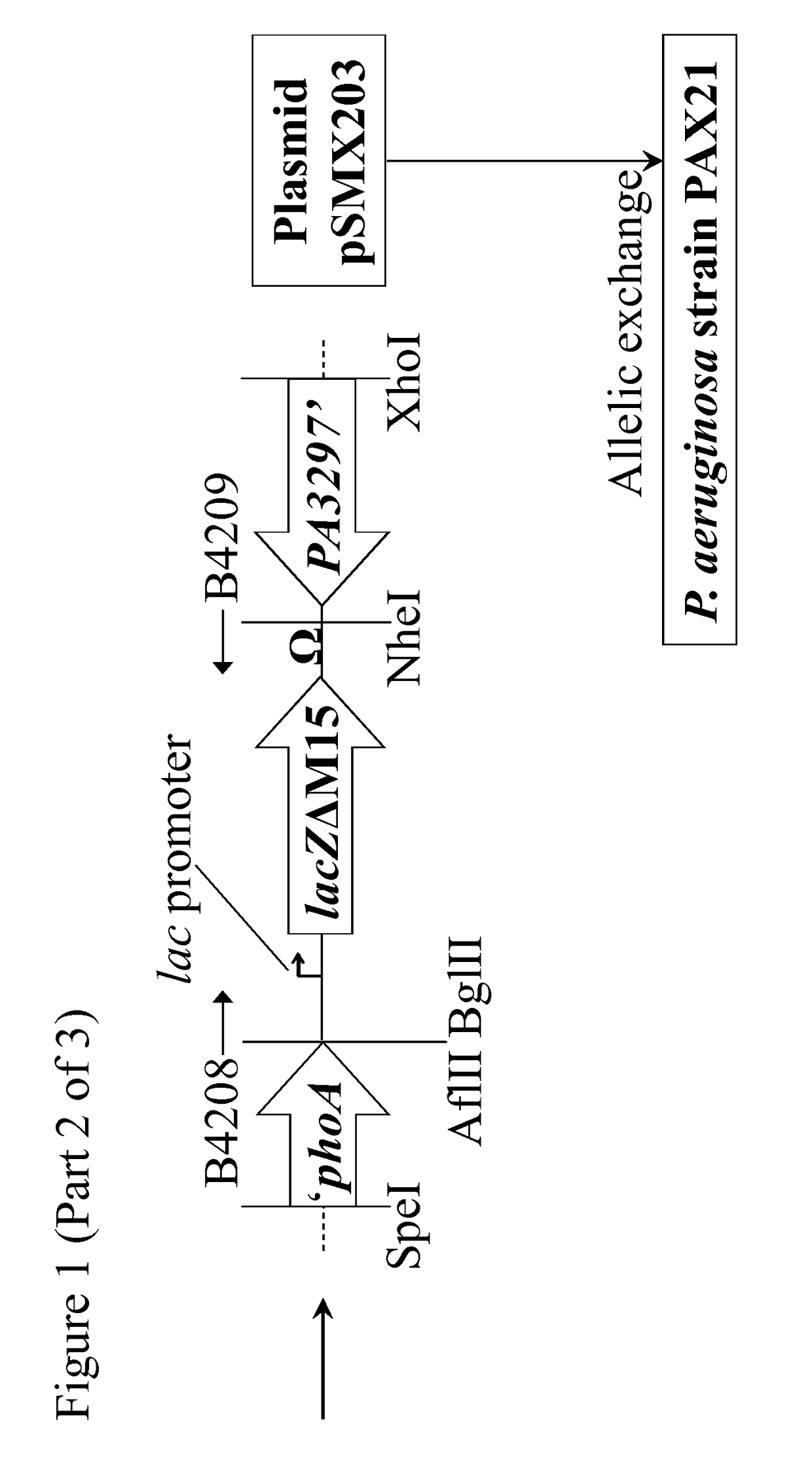Multiple host range bacteriophage with hybrid tail fibres
a bacteriophage and hybrid technology, applied in the field of multi-host range bacteriophage with hybrid tail fibres, can solve the problems of antibiotic resistance, treatment failure, and global problem of antibiotic resistance, and achieve the effect of preventing, eliminating or reducing the carriage of bacteria and contamination, and limiting the transmission of microbial infections
- Summary
- Abstract
- Description
- Claims
- Application Information
AI Technical Summary
Benefits of technology
Problems solved by technology
Method used
Image
Examples
Embodiment Construction
[0040]This invention will now be described in more detail, by way of example only, and with reference to the accompanying drawings, in which:
[0041]FIG. 1 is a schematic diagram showing construction of plasmids containing lacZΔM15 and Phi33 endolysin;
[0042]FIG. 2 is a schematic diagram showing construction of plasmids with replaced tail fibre sections;
[0043]FIG. 3 is a schematic diagram showing construction of phage with hybrid tail fibre genes, which may be subsequently modified to have endolysin replaced by SASP-C according to the invention;
[0044]FIG. 4 is a schematic diagram showing construction of phage with further hybrid tail fibre genes, which may be subsequently modified to have endolysin replaced by SASP-C according to the invention;
[0045]FIG. 5 is a schematic diagram showing construction of bacteriophage with hybrid tail fibre genes, in which the lacZα marker has been removed;
[0046]FIG. 6 is a schematic diagram showing construction of plasmids in which the endolysin gene is...
PUM
 Login to View More
Login to View More Abstract
Description
Claims
Application Information
 Login to View More
Login to View More - R&D
- Intellectual Property
- Life Sciences
- Materials
- Tech Scout
- Unparalleled Data Quality
- Higher Quality Content
- 60% Fewer Hallucinations
Browse by: Latest US Patents, China's latest patents, Technical Efficacy Thesaurus, Application Domain, Technology Topic, Popular Technical Reports.
© 2025 PatSnap. All rights reserved.Legal|Privacy policy|Modern Slavery Act Transparency Statement|Sitemap|About US| Contact US: help@patsnap.com



